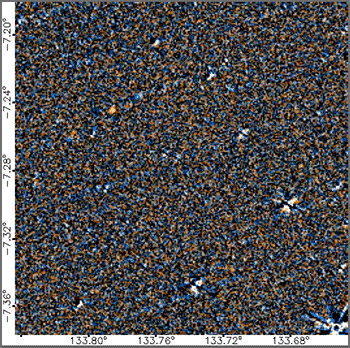NASA Wants the Public to Log In to Help Find Planet 9
Citizen scientists can examine photos to help discover a new planet, which recent evidence suggests is hiding at the edge of the solar system
/https://tf-cmsv2-smithsonianmag-media.s3.amazonaws.com/filer/4a/a0/4aa06f88-ac58-4b77-8396-c4615c925fc6/planet-9-art-news-web.jpg)
Back in 2012, as the day purportedly foretold by the Mayan calendar as the end of the world came closer, the internet lit up with pseudo-science theories that the Earth was destined to crash into Planet X—aka Niburu—a hidden shadow planet lurking in our solar system. That, luckily, didn’t happen (Niburu-truthers now have now recscheduled the crash for October 2017), but in recent years scientists have discovered real evidence of a hidden planet. And now they are asking the science-minded public to help them scan the skies for it.
Dubbed Planet 9 (or Planet 10 for those still desperately clinging to Pluto), Mike Wall at Space.com reports that the existence of the unseen celestial body was first proposed by astronomers in 2014. After looking at the odd orbits of dwarf planets and other rocky bodies beyond Pluto, researchers hypothesized that a large body was perturbing their journeys through space.
Since then, more bodies with unsual orbits have been discovered, and one team suggests that the undiscovered planet has tilted the orbits of all the other planets in the solar system by 6 degrees as well as tilting the sun itself.
According to calculations, Planet 9, if it exists, would be 10 to 15 times as massive as Earth and would likely be 1,000 astronomical units away from the sun, or 1,000 times the distance from Earth to our favorite star. The evidence for the planet is growing so quickly that Mike Brown, astronomer at Caltech, said during a press conference in October that its discovery was more or less imminent, reports Wall. “I’m pretty sure, I think, that by the end of next winter—not this winter, next winter—I think that there'll be enough people looking for it that … somebody's actually going to track this down.”
Now, NASA and the University of California, Berkeley are relying on legions of astrogeeks to help finally find the elusive planet. In a project called Backyard Worlds: Planet 9, the public can help by examining “flipbooks” of images from NASA’s Wide-field Infrared Survey Explorer (WISE), which has imaged the sky six different times, to identify bright spots that are moving. A moving point of light could be Planet 9. While automated searches are already poring over the data, NASA says human eyes often see things the computers miss.
“Automated searches don’t work well in some regions of the sky, like the plane of the Milky Way galaxy, because there are too many stars, which confuses the search algorithm,” says postdoc researcher Aaron Meisner, who works on the WISE data, in a press release. People at their computers looking at images on their screens might be able to spot the objects better, he says. “Backyard Worlds: Planet 9 has the potential to unlock once-in-a-century discoveries, and it’s exciting to think they could be spotted first by a citizen scientist.”

So why can’t we already see Planet 9 in the night sky, like we can see most of the other planets? According to the press release, because that region of space is so far from the sun, very little light reaches objects and they do not shine very brightly, if at all. The infrared camera on WISE, however, can pick up faint light from objects.
Despite mounting evidence, however, not everyone believes that Planet 9 is the real deal. Renu Malhotra, professor of planetary science at the University of Arizona, tells Joel Achenbach at The Washington Post that the evidence still seems sketchy. “The evidence is very intriguing, but I don’t think I can put a high likelihood on it yet,” she says. “I see the evidence as being quite soft, still.”
Even if Planet 9 doesn’t emerge from the flipbooks, Deborah Byrd and Eleanor Imster at EarthSky report there might be fringe benefits if citizen scientists are able to detect mysterious brown dwarfs, high mass star/planet hybrids that only emit infrared light.